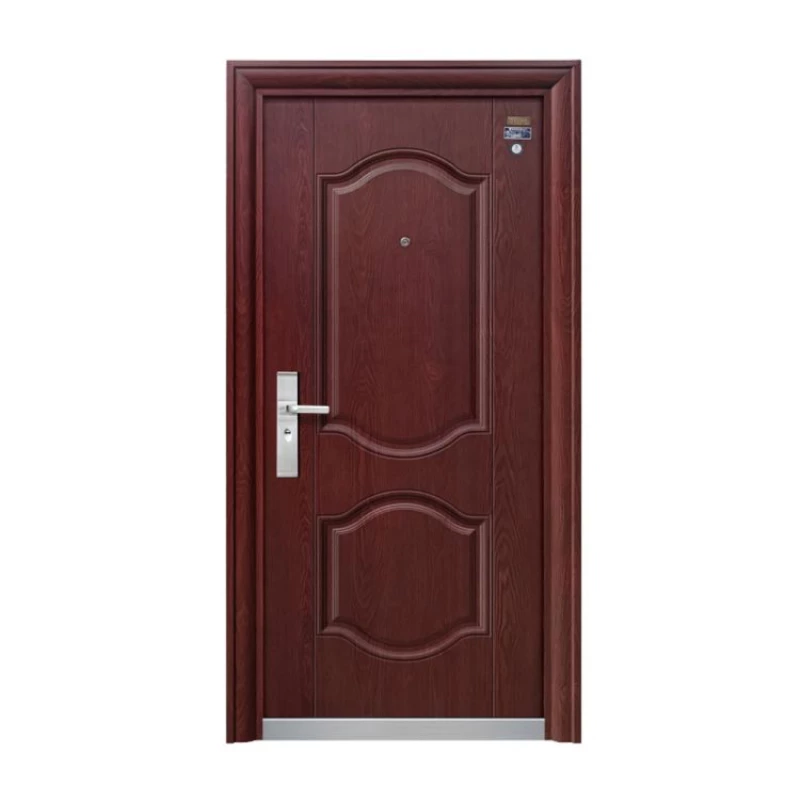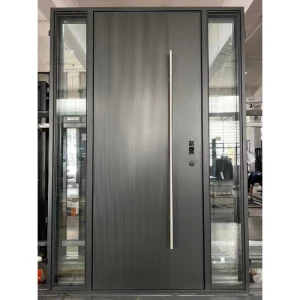Rust-Resistant Stainless Steel Door with High-Security Locks
- Standard Size
- 2050*960 (Accept Customization)
- Door Leaf Thickness
- 68mm (can be customized)
- Door Leaf
- Standard 0.8/1.0mm (Accept Customization)
- Inner Filling
- Fire door core panel/honeycomb paper(Accept Customization)
- Lock Set
- High Quality Main Lock+Side Lock+Up-Down Lock
- Surface Treatment
- Heat Transfer(Accept Customization)
- Open Direction
- Inward/Outward/Left/Right
- Accessories
- Handle;Lock;Hinge;Peephole;Door Bell;Bolts
- Fuction
- Fireproof; Burglarproof
What Makes a Security Door Safest?
1. Check the Performance and Structure of the Lock
- Choose a drill-resistant lock cylinder.
- The lock should have a three-point locking mechanism.
- For single doors, there should be three hinges; for double doors, six hinges.
- Consider adding additional deadbolts between the door leaf and the frame.
2. Consider the Number of Locks and Bolts
- Opt for a door with two locks, each controlling two bolts.
3. Assess the Thickness and Area of Reinforcement Plates
- The protective plate for the lock should be made of cold-rolled steel with a thickness exceeding 2 millimeters.
- The height of the protective plate should not be less than 500 millimeters.
- For enclosed security doors, other parts should have cold-rolled steel with a thickness of at least 1.5 millimeters.
4. Evaluate the Quality of Craftsmanship
- Material selection is essential, but the quality of craftsmanship is crucial.
- Pay particular attention to checking for any welding defects.
5. Consider the Material and Security Grade of the Security Door
- Most security doors on the market are made of steel, but there are also options in stainless steel, copper, steel-wood structures, and aluminum alloy.
- Security doors are graded as A, B, C, or D. For residential use, C and D grades are commonly preferred as they offer higher security performance.
- According to national standards, security doors should have a permanent fixed marking on the inner side at the top corner of the hinge, at a height of 1600mm ± 100mm from the ground.
6. Select Based on Exterior Design
- Security doors are available in luxury, mid-range, and standard categories. Choose according to personal preferences and requirements.
7. Examine the Lock Cylinder
- The lock cylinder is a crucial consideration for security doors.
- Security door lock cylinders have three levels, with B-level lock cylinders being commonly used for household security. However, for maximum security, consider using lock cylinders beyond the B-level, which even professional locksmiths find difficult to open, ensuring enhanced safety for your home environment.
We have more categories for you. lf you can't find the products you want above,just fill in the form and tell us whatproducts you want to import from China.





















